Whirlpools are natural phenomena that pose significant dangers, yet they also create fascinating landscapes that attract tourists to explore.
Top 5 Largest and Most Famous Whirlpools in the World
A whirlpool is a swirling body of water formed when two opposing currents meet. Powerful whirlpools are commonly found in seas and oceans. Smaller whirlpools can often be seen at the base of waterfalls and can also be created in artificial structures like hydroelectric dams.
In oceans, whirlpools are primarily caused by tidal forces and have the potential to sink large ships.
1. Corryvreckan Whirlpool – Scotland
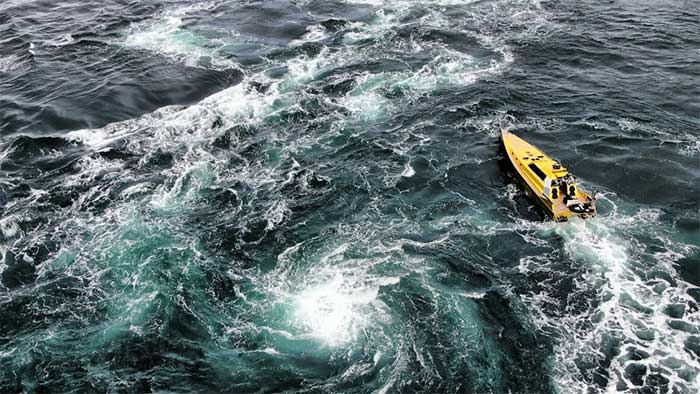
The whirlpool is located at the northern part of the bay and produces a very loud noise. (Photo: Frank Kowalski).
Corryvreckan Bay is a strait located between the islands of Jura and Scarba in Scotland. The flow and underwater topography of the Atlantic Ocean create a strong tidal race, which is the reason for the formation of the Corryvreckan Whirlpool.
The whirlpool is situated in the northern part of the bay and produces a loud noise that can be heard from 16 km away. Divers exploring the bay consider this site one of the most dangerous diving spots in Scotland and the UK.
2. Naruto Whirlpool – Japan
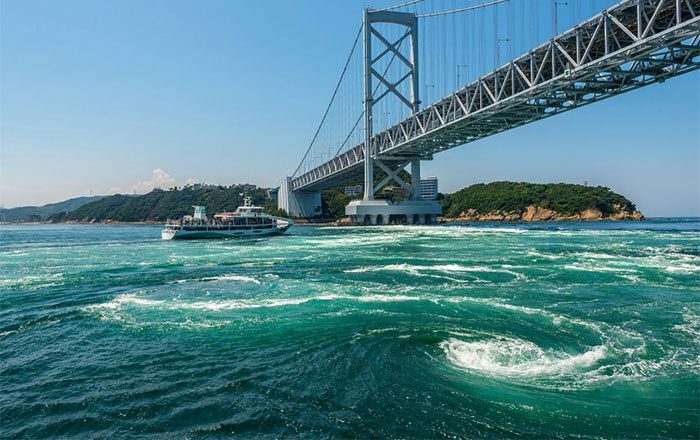
The flow at Naruto Strait is the fastest in Japan and the fourth fastest in the world. (Photo: Trip.com).
Located between the city of Naruto and Awaji Island in Japan, Naruto Strait is famous for a tidal whirlpool known as the Naruto Whirlpool. The strait is 1.3 km wide and connects the Inland Sea with the Pacific Ocean.
The tides cause a large volume of water to move in and out of the Inland Sea twice a day. Because Naruto Strait is narrow, water rushes through it via the Naruto Channel at a speed of 19 km/h during high tide, creating whirlpools with diameters of up to 20 m.
The flow at Naruto Strait is the fastest in Japan and the fourth fastest in the world, with wave heights reaching nearly 9 m. The British Navy considers this whirlpool very dangerous, capable of pulling objects and sinking them to depths of 262 m. The Naruto Bridge is an ideal spot to observe the whirlpools here.
3. Skookumchuck Narrows – Canada
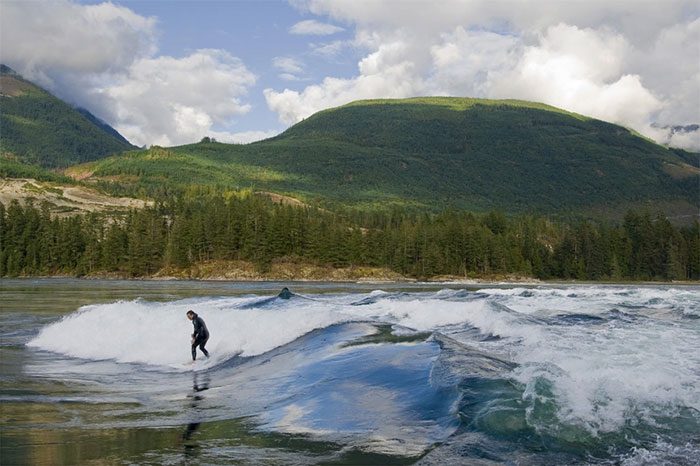
Whitecaps and whirlpools are often formed at the rapids in this area. (Photo: Kelly Funk Photography).
Skookumchuck Narrows is a strait that forms the gateway to Sechelt Inlet on the coast of British Columbia, Canada. Whitecaps and whirlpools are often formed at the rapids in this area during peak flow times.
Every day, a large volume of seawater is forced through Skookumchuck Narrows by the tides. The difference in water levels on either side of the river can exceed 2 m, while current speeds can exceed 30 km/h. The tidal rapids here are sometimes considered the fastest in the world. The tidal pattern causes water to move almost constantly in the area.
4. Moskstraumen – Norway
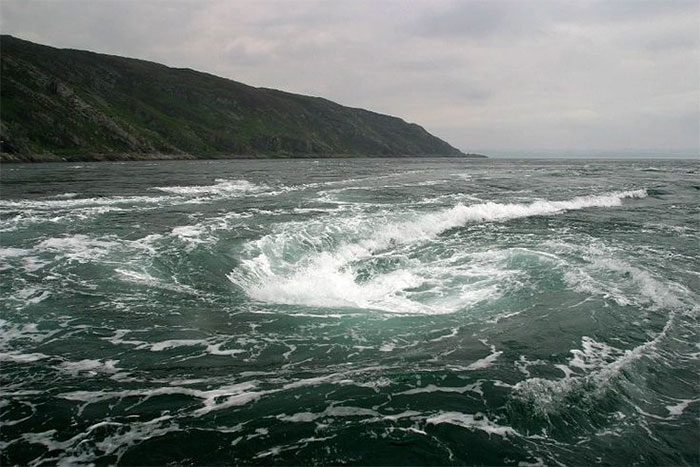
Moskstraumen is a tidal whirlpool system formed off the coast of Norway. (Photo: Pinterest).
Moskstraumen is one of the strongest whirlpools in the world. Not just a single whirlpool, Moskstraumen is a tidal whirlpool system formed off the coast of Norway. The whirlpool is created when strong tidal currents flow between islands into the Atlantic Ocean and the narrow Vestfjorden.
The largest whirlpool has a diameter of 40-49 m and creates a surface swell of nearly one meter. The speed of the current can reach up to 32 km/h. Moskstraumen results from factors such as tides, strong winds, location, and underwater topography. This whirlpool is often used as a plot device in stories by famous writers like Jules Verne and Edgar Allan Poe.
5. Saltstraumen – Norway
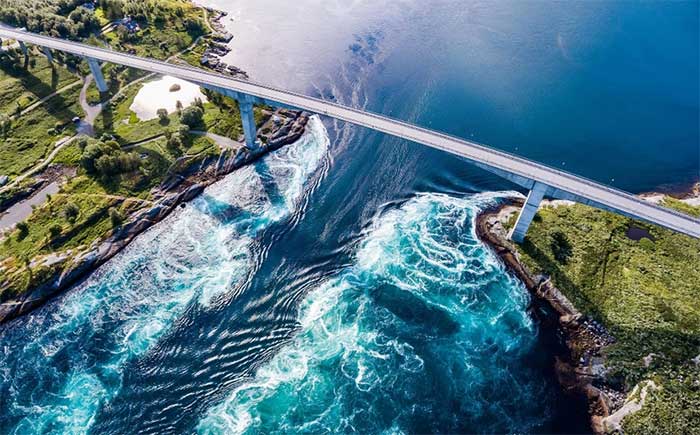
The whirlpools here can have diameters of up to 10 m and depths of nearly 5 m. (Photo: Life in Norway).
The whirlpools at Saltstraumen Strait top the list of the largest whirlpools in the world. This is also the strongest whirlpool.
Located in the Arctic Circle off the coast of Norway, Saltstraumen is a small strait with strong tidal currents, approximately 2.6 km long and nearly 150 m wide. About 400 million m³ of water flows through Saltstraumen every 6 hours. The whirlpools, with diameters of up to 10 m and depths of nearly 5 m, form four times a day during the strongest flows, with speeds reaching up to 40 km/h.
The Saltstraumen whirlpool is very famous and is a major reason why tourists visit this area.


















































